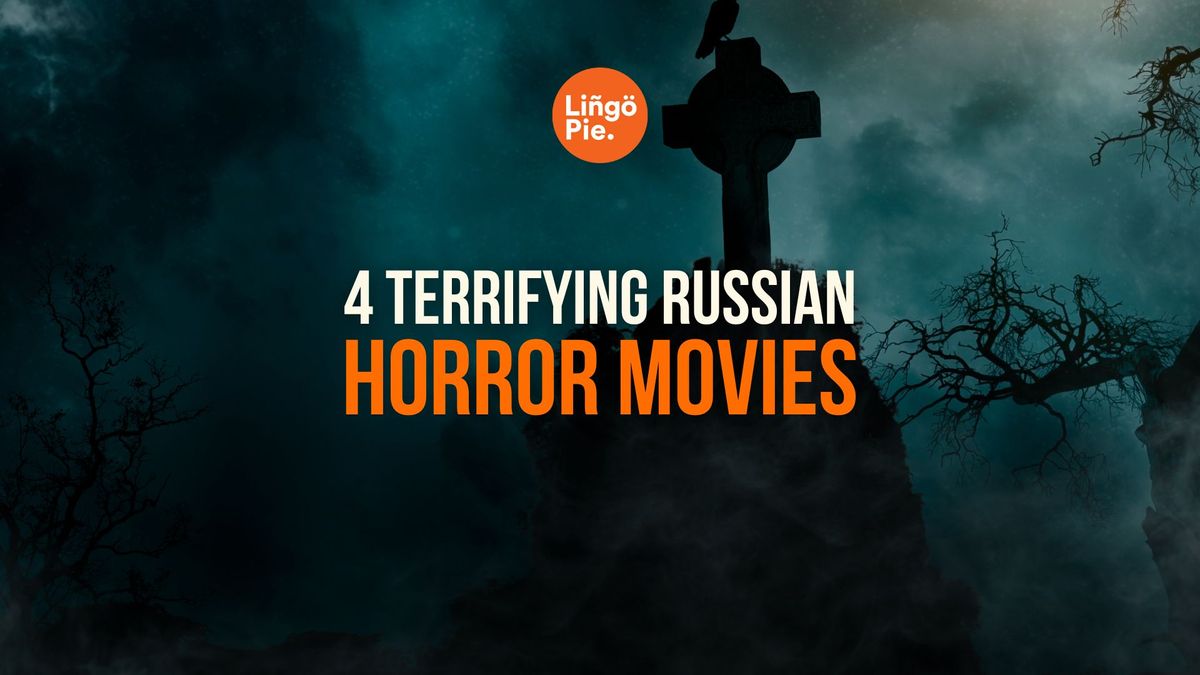Do you like watching horror films on Halloween? If so, you came to the right place. In today's article, we'll take a look at 20 Japanese horror movies to watch alone, with friends or your boyfriend or girlfriend and make Halloween a more interestingly frightening experience.
I love to meet with my friends and watch some good horror movies with pizza and snacks. So, I hope you enjoy the movies from the list the same way I do.
However, this article not only has a list, but also a look to the features that make Japanese horror (or J-horror) so scary, a vocabulary list related to horror and a tip for learning Japanese with ease while watching horror movies.
Without further ado, let's start!
🎃 Halloween In Japan: A Gaijin's Guide To 6 Spooktacular Traditions
🎃 10 Iconic Studio Ghibli Creatures Every Fan Should Know
🎃 7 Japanese Horror Stories to Learn Japanese
🎃 Gion Matsuri Guide +15 Useful Japanese Words

Japanese Horror Vocabulary
Japanese horror is famous for its slow dread, ghostly folklore, and unsettling atmosphere. Words carry a unique power in this genre, setting the tone for everything from whispers of a spirit to the weight of a curse. Learning these terms makes watching J-horror more immersive and offers a glimpse into how fear is expressed in Japanese culture.
Here are some of the most essential words you will encounter.
| Japanese | Romaji | English |
|---|---|---|
| 幽霊 | yūrei | Ghost or spirit of the dead |
| 呪い | noroi | Curse |
| 化け物 | bakemono | Monster |
| 地獄 | jigoku | Hell |
| 恐怖 | kyōfu | Fear |
| 墓 | haka | Tomb |
| 墓場 | hakaba | Graveyard |
| 殺人 | satsujin | Murder or killer |
| 自殺 | jisatsu | Suicide |
| 血 | chi | Blood |
| 怨霊 | onryō | Vengeful spirit |
| 悪夢 | akumu | Nightmare |
| 不気味 | bukimi | Eerie or uncanny |
| 怖い | kowai | Frightening or I am scared |
| 死神 | shinigami | Grim Reaper |
The Best Japanese Horror Films
Ring (1998)
Original title: Ringu リング

Hideo Nakata’s Ring is the movie that defined Japanese horror for the modern era. Its cursed videotape and the chilling figure of Sadako created one of the most iconic horror myths in world cinema. The movie’s slow pacing and unnerving silence make it unforgettable, building dread in a way that lingers long after the credits roll.
When watching Ring with Japanese audio and subtitles, you’ll notice recurring words like 呪い (noroi) for curse and 怖い (kowai) when characters express fear. Because much of the dialogue comes from investigative journalism and family conversations, it’s also a great way to pick up everyday vocabulary while being immersed in J-horror atmosphere.
Ju-on: The Grudge (2002)
Original title: Ju-on 呪怨.

Takashi Shimizu’s Ju-on: The Grudge takes the haunted house concept and turns it into something far more unsettling. The curse spreads relentlessly to anyone who enters, creating a chain of terror that feels impossible to escape. Its nonlinear storytelling keeps viewers disoriented, matching the inescapable chaos of the curse itself.
For learners, this film offers exposure to expressions tied to fear and the supernatural. You’ll hear 怨霊 (onryō) for vengeful spirit and 幽霊 (yūrei) for ghost. Listening carefully also helps you pick up how Japanese characters react emotionally in everyday language, whether it’s whispering 怖い… (“I’m scared…”) or shouting 助けて! (“Help me!”).
Dark Water (2002)
Original title: Honogurai Mizu no Soko kara 仄暗い水の底から.
Also directed by Hideo Nakata, Dark Water is a haunting blend of supernatural horror and emotional drama. A mother and her daughter move into a run-down apartment where a mysterious water leak carries an ominous secret. Its slow melancholy and atmosphere of despair give the film a deeply human core.
From a language perspective, the film introduces useful household vocabulary in addition to horror terms. You’ll hear words like 水 (mizu) for water and 母 (haha) for mother, woven into unsettling contexts. It’s a film that shows how ordinary Japanese words can take on chilling resonance when placed in a horror setting.
Audition (1999)
Original title: Odishon オーディション

Takashi Miike’s Audition begins as a drama about a widower searching for love but slowly morphs into one of the most unsettling horror films ever made. Its slow build leads to a shocking and unforgettable finale, making it a film that lures viewers in before turning their expectations upside down.
The movie is also rich for learners because it begins with natural, polite Japanese in the audition and dating scenes. As the tone shifts, you’ll notice contrasts with harsher emotional language. Words like 怖い (kowai) and 恐怖 (kyōfu) emerge naturally, showing how context changes the weight of familiar terms.
One Missed Call (2003)
Original title: Chakushin Ari 着信アリ.
In One Missed Call, technology becomes the medium for horror when people receive eerie voicemails from their future selves predicting their deaths. It’s a chilling example of how J-horror adapted to the anxieties of the digital age, with phones turning from lifelines into harbingers of doom.
For learners, this film is filled with modern vocabulary around communication. You’ll hear 電話 (denwa) for phone and 着信 (chakushin) for incoming call. The horror context makes these ordinary words unforgettable, especially when paired with the panic of characters repeating 信じられない (shinjirarenai) — “I can’t believe it.”
Noroi: The Curse (2005)

Kōji Shiraishi’s Noroi: The Curse is a found-footage horror masterpiece that follows a paranormal investigator documenting increasingly disturbing events. Its slow burn and documentary realism give it an unsettling authenticity that leaves the audience questioning what is real.
Learners can focus on vocabulary linked to investigation and the supernatural. Words like 呪い (noroi) for curse and 悪夢 (akumu) for nightmare appear throughout. Because the dialogue mimics real conversations and interviews, it provides natural listening practice in addition to horror immersion.
Ichi the Killer (2001)
Original title: Koroshiya 1 殺し屋1.

Takashi Miike’s Ichi the Killer is notorious for its extreme violence and disturbing imagery. Blending crime, sadism, and horror, it’s less supernatural and more psychological, testing how far audiences can endure its brutal story. It remains one of Miike’s most infamous works.
Though graphic, the film gives learners exposure to darker vocabulary tied to crime. The title itself uses 殺し屋 (koroshiya) for hitman and 殺人 (satsujin) for murder. For those studying Japanese seriously, this film highlights how context can shape the meaning of violent words in dialogue.
Tag (2015)
Original title: Riaru Onigokko リアル鬼ごっこ.

Sion Sono’s Tag begins with a shocking sequence and never lets go, plunging a schoolgirl into a surreal game where reality constantly shifts. It’s violent, bizarre, and symbolic, offering not just gore but commentary on gender roles and identity.
For language learners, the film includes school-related vocabulary such as 学校 (gakkō) for school and 友達 (tomodachi) for friends. At the same time, horror terms like 死神 (shinigami) for Grim Reaper appear in thematic dialogue. Its repeated chase and survival scenarios reinforce core words like 走れ (hashire) meaning “run.”
Pulse (2001)
Original title: Kairo 回路.
Kiyoshi Kurosawa’s Pulse is a haunting vision of the internet age, where the dead seep into the world of the living through a mysterious website. Its atmosphere of loneliness and despair feels even more relevant today.
Learners can pay attention to technology vocabulary like 回路 (kairo) for circuit and コンピュータ (konpyūta) for computer. It also introduces emotional terms tied to isolation, such as 孤独 (kodoku) for loneliness. Combined with horror terms, it makes the film both linguistically and thematically layered.
Reincarnation (2005)
Original title: Rinne 輪廻.

In Reincarnation, an actress begins filming a movie about a real-life massacre only to experience horrifying visions herself. As fiction and reality blur, the film explores the cyclical nature of trauma and horror.
Learners will hear the word 輪廻 (rinne), meaning reincarnation, central to the story. Other religious and spiritual terms surface, making it useful for those interested in how Japanese culture talks about life, death, and the afterlife.
Marebito (2004)
Original title: Marebito 稀人.

Takashi Shimizu’s Marebito is a philosophical horror exploring obsession, fear, and underground worlds filled with strange beings. Its Lovecraftian influence sets it apart, favoring existential dread over traditional scares.
The title itself, 稀人 (marebito), refers to a mysterious or rare visitor. Learners can explore vocabulary tied to fear, such as 恐怖 (kyōfu), and philosophical terms sprinkled throughout the dialogue. It’s a challenging but rewarding film linguistically.
As the Gods Will (2014)
Original title: Kamisama no Iu Tōri 神さまの言うとおり.
Takashi Miike’s As the Gods Will throws high school students into deadly children’s games where losing means death. Blending surreal humor with gore, it’s a bizarre and gripping survival horror.
For learners, school and game vocabulary stand out. You’ll hear 神さま (kamisama) for god and 死 (shi) for death. The survival setting repeats urgent commands like 逃げろ (nigero) meaning “run away,” making it a dynamic film for listening practice.
The Complex (2013)
Original title: Kuroyuri Danchi クロユリ団地.

Hideo Nakata’s The Complex follows a nursing student who moves into a new apartment complex only to uncover terrifying secrets from its past. The film combines personal drama with ghostly hauntings, delivering atmosphere and tension.
Language learners will pick up apartment and daily life vocabulary, such as 団地 (danchi) for housing complex. Alongside that are classic horror words like 幽霊 (yūrei) for ghost. Its domestic setting makes it an accessible film for everyday language in a chilling context.
Sadako vs. Kayako (2016)
Original title: Sadako vs Kayako 貞子vs伽椰子.
Sadako vs. Kayako pits the two most famous J-horror spirits against each other in a supernatural showdown. It’s a crossover event that horror fans had long imagined, bringing together the curses of Ring and Ju-on.
For learners, this film is full of recognizable horror vocabulary: 呪い (noroi) for curse, 怨霊 (onryō) for vengeful spirit, and 怖い (kowai) in characters’ fearful reactions. Since both franchises’ vocab repeats, it’s an excellent way to reinforce horror terms while enjoying a fan-service spectacle.
Onibaba (1964)
Original title: Onibaba 鬼婆.
Kaneto Shindō’s Onibaba is a classic of Japanese cinema, set during a civil war where two women survive by killing lost samurai and selling their armor. When a mysterious warrior wearing a demonic mask appears, their fragile world collapses. Its blend of historical drama and horror makes it timeless.
Learners will hear older, more formal Japanese reflecting its medieval setting. The word 鬼 (oni) for demon is central to the story. Watching Onibaba offers not just vocabulary practice but also insight into how horror themes connect with Japanese history and folklore.
What makes Japanese horror so terrifying?
If you watched Hollywood horror movies, you know that what makes them scary is shock value (gore scenes), jump scares and escape from evil killers or creatures. This is different in Japanese horror.
J-horror is more psychological and affects the protagonists and the audience indirectly, whereas American horror concentrates on physical fear and surprises that make audience jump from their seats. Japanese horror movies have less sound and more silence, they're slower in pace but unsettling at the same time and they focus on internal fears.
Cursed spirits that want revenge (also known as onryō 怨霊) are also present in a lot of Japanese horror movies and what makes scary is that they appear to the main characters in daily life. This makes the audience believe that kind of spirits can appear in their common lives.
The answer to which one of these types of horror is the best is up to the viewer's taste.
Learn Japanese With Lingopie
So, there you have it. A list with 15 Japanese horror movies to watch this Halloween and experience one of the best horror in the world. Do you agree with our list? What J-horror movie would you add to the list?
Now, you have the movies and the vocabulary for a Japanese Halloween. The only thing missing is learning Japanese watching horror movies and TV series with Lingopie!
Lingopie offers an authentic language learning experience by watching real TV shows and movies in Japanese, and giving you the chance to learn words and phrases from what's said in the scenes you watch. You can review your words with games and flashcards and take communication-focused lessons (both group and private) with our experienced teachers and tutors so you can deepen your knowledge in Japanese.
So, what are you waiting for? Sign up and start your free trial now!









![Japanese Onomatopoeia: 70+ Words You’ll See In A Manga [Guide]](/blog/content/images/size/w300/2025/12/Japanese-Onomatopoeia.jpg)